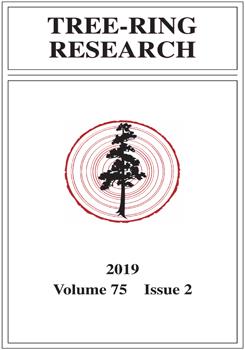Here we describe five publicly available online labs, geared to undergraduate students, which focus on foundational tree-ring research. Students are introduced to basic dendrochronological concepts and practices (Lab 1) while learning about research that has implications for human well-being. Students learn about the way scientists use tree-ring records to reconstruct drought in the Hudson Valley in New York (Lab 2), how tree-ring science began through its utility in putting exact calendar dates on ancestral pueblos (Lab 3), how tree-ring records can be used to put drought into a long-term context, reconstruct streamflow, and better manage water resources (Lab 4), and how tree rings have been used to reconstruct temperatures in the northern latitudes (Lab 5). These labs have the dual aim of guiding students to use many of the same tools as tree-ring scientists, while also giving them a sense of the nature-of-science and how scientists work. Throughout the labs, students are guided to explore virtual field sites, navigate public databanks, observe and measure tree-ring samples, and describe trends and extremes in paleoclimate records. Labs are designed for a 2 to 3-hour lab class and have been classroom-tested and assessed by faculty teams and students.
How to translate text using browser tools
7 August 2019
TREE-RING EXPEDITIONS (TREX): ONLINE LABS THAT GUIDE UNDERGRADS TO THINK LIKE SCIENTISTS
Nicole Davi,
Patrick Pringle,
Jeff Lockwood,
Francesco Fiondella,
Rose Oelkers

Tree-Ring Research
Vol. 75 • No. 2
August 2019
Vol. 75 • No. 2
August 2019
climate change
climate literacy
dendrochronology
nature-of-science
paleoclimate
science education
science literacy




